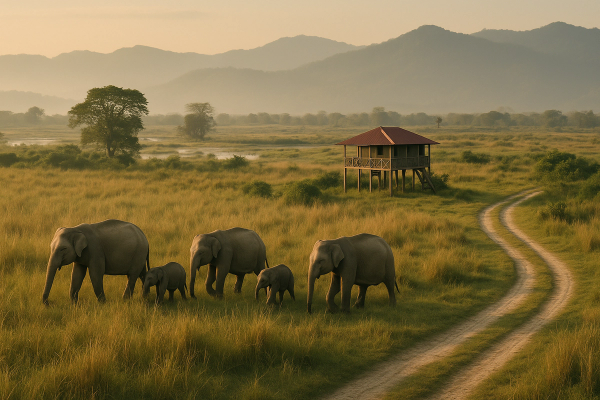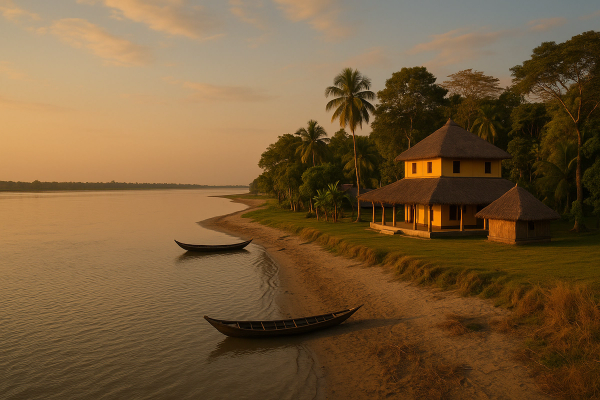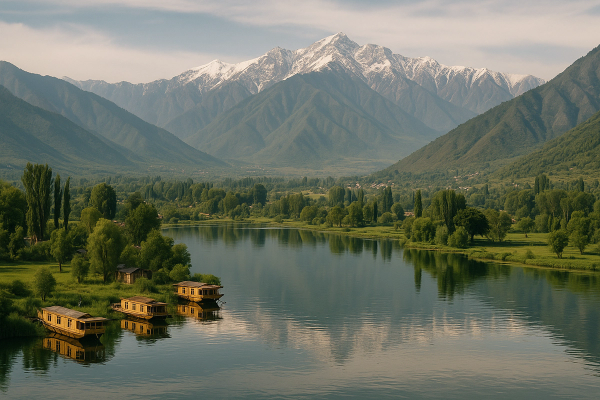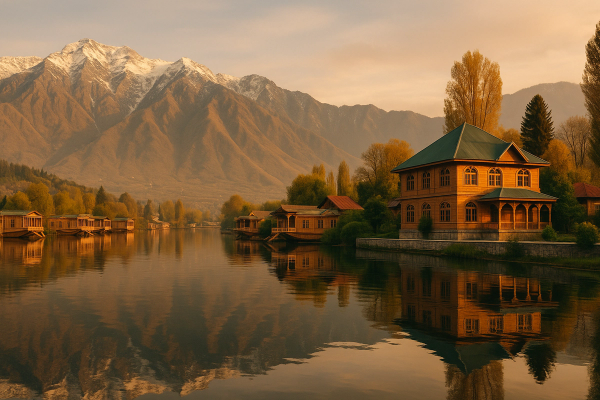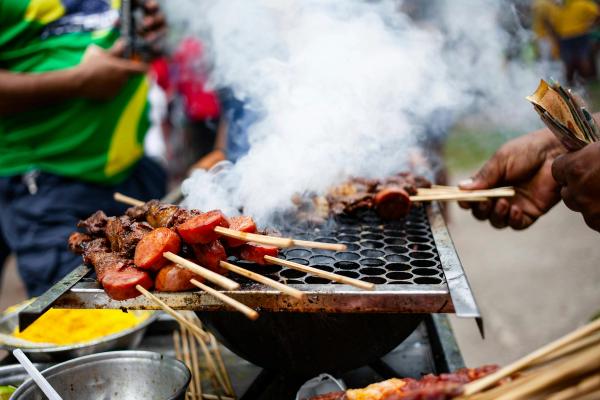Tokyo Hidden Gems (2025): Forget the Crowds, Find the Real City - A Localish Guide#
Okay, let’s be real. You've seen the pictures: Shibuya Crossing madness, neon lights brighter than your future, maybe even a robot restaurant (which, honestly? Kinda skip-able unless you really love robots). Tokyo is that city, for sure. But after spending years weaving through its streets – getting gloriously lost more times than I can count – I realized the real magic often hides just around the corner, down a quiet alley, or in a neighborhood the glossy travel brochures forget. This isn't your standard Tokyo travel guide. We're diving deep into the hidden gems Tokyo keeps tucked away for 2025. Think less giant crowds, more genuine encounters. I want to share some Tokyo local tips and things to do Tokyo style that go beyond the top 10 lists. Ready to explore the Tokyo I fell in love with?¶
So, What's Tokyo Really Like?#
It’s massive. Like, mind-bogglingly huge. A sprawling mega-city where hyper-modern skyscrapers pierce the clouds right next to tiny, centuries-old shrines tucked between buildings. It's a city of contrasts: intense energy and surprising pockets of absolute serenity. People often think it's just concrete jungle and overwhelming crowds, and yeah, you can find that. But there’s also incredible nature within the city limits, neighborhoods that feel like stepping back in time, and a culture that’s deeply respectful and fascinatingly complex. It's efficient, it's clean (mostly!), and the food... oh, the food. We'll get to that.¶
When Should You Actually Visit Tokyo?#
Honestly, there's no bad time, but each season offers a totally different vibe. Picking the right one depends on what you're after (and how much you like humidity).¶
Spring (March - May): Cherry Blossom Fever#
Pros: Obviously, the sakura (cherry blossoms) are stunning. The weather is generally mild and pleasant. Cons: Everyone knows about the blossoms, so expect crowds and higher prices, especially late March/early April. Book accommodation way in advance.¶
- Pro: Parks are gorgeous, hanami (blossom viewing parties) are fun to witness (respectfully!).
- Con: Golden Week (late April/early May) is a major Japanese holiday period – super crowded, super expensive.
Summer (June - August): Hot, Humid, and Happening#
Pros: Lots of vibrant summer festivals (matsuri) with fireworks, food stalls, and traditional dress. Longer daylight hours. Cons: It gets incredibly hot and humid. Like, stepping-outside-feels-like-walking-into-a-sauna hot. Rainy season (tsuyu) usually hits in June/early July. Side note: if you visit in July like I did once... bring extra everything, especially deodorant and a small towel (tenugui) for sweat!¶
Autumn (September - November): My Personal Favorite#
Pros: Cooler, comfortable temperatures, lower humidity (usually). Beautiful autumn foliage (koyo) in parks and gardens around late November. Fewer crowds than spring. Cons: Typhoon season can linger into September/October, potentially disrupting travel plans. Check the forecast!¶
Honestly, crisp autumn air, stunning fall colors in places like Rikugien Garden, and slightly less mania? This is my sweet spot for exploring Tokyo comfortably.
Winter (December - February): Clear Skies and Illuminations#
Pros: Generally dry and sunny with crisp, clear air (great views of Mt. Fuji on good days!). Fewer international tourists. Amazing winter illuminations light up the city. Cons: It's cold (obviously), days are shorter. New Year period (late Dec/early Jan) sees many things close down.¶
| Season | Avg Temp (Day) | Vibe | Costs | Good For |
|---|---|---|---|---|
| Spring (Mar-May) | 10-20°C (50-68°F) | Beautiful, Crowded | $$$$ | Cherry blossoms, pleasant weather |
| Summer (Jun-Aug) | 25-35°C+ (77-95°F+) | Hot, Humid, Festive | $$$ | Festivals, long days (if you handle heat) |
| Autumn (Sep-Nov) | 15-25°C (59-77°F) | Comfortable, Colorful | $$$ | Fall foliage, good walking weather |
| Winter (Dec-Feb) | 5-12°C (41-54°F) | Crisp, Quiet, Festive Lights | $$ | Fewer crowds, illuminations, budget travel |
Getting To Tokyo & Navigating This Beast#
Flying in is usually the way. Tokyo has two major airports, Narita (NRT) and Haneda (HND). Haneda is WAY closer to the city center, which is a big plus after a long flight. Narita is further out, but often handles more international routes.¶
Airport to City: Your Options#
- Narita (NRT): Narita Express (N'EX) train is comfy but pricey (~¥3,000+, ~60-90 mins to major stations). Keisei Skyliner is slightly faster/cheaper to Ueno (~¥2,500, ~40 mins). Limousine Bus goes direct to many hotels, good if you have lots of luggage (~¥3,200+, 90+ mins depending on traffic).
- Haneda (HND): Keikyu Line or Tokyo Monorail are quick and cheap (~¥500-700, ~15-30 mins) into central Tokyo (Shinagawa/Hamamatsucho). Limousine Bus is also available (~¥1,000-1,500).
My Tip: If you land at Haneda, grab a Suica or Pasmo card (IC card) right at the station. You can load it with cash and just tap for trains and buses (and even convenience stores!). Saves SO much hassle buying individual tickets. You can even get these on your phone now!
Getting Around Tokyo: The Train is King (and Sometimes Queen)#
Tokyo's public transport is insanely efficient, clean, and punctual. It's mostly run by JR (Japan Railways) and the Tokyo Metro/Toei Subway systems. It looks like a terrifying spaghetti monster on the map at first, I won't lie. I definitely ended up on the wrong platform heading in the opposite direction my first few times.¶
- Trains/Subway: Use that IC card (Suica/Pasmo)! Fares are distance-based, usually ¥150-¥300 per trip within central Tokyo. Apps like Google Maps or Japan Transit Planner (by Jorudan) are essential for figuring out routes and transfers.
- Taxis: Clean and reliable, but expensive. Doors open automatically (don't try to open/close them yourself!). Good for short hops late at night or if you're totally lost.
- Walking: Honestly, the best way to discover hidden gems! Many neighborhoods are very walkable. Just be prepared for sore feet.
Real Talk: Avoid rush hour (roughly 7:30-9:30 AM and 5:00-7:00 PM) if you value personal space. It's... intense. Also, follow the signs for transfers carefully; major stations like Shinjuku or Tokyo Station are labyrinths.
Where to Stay: Beyond Shinjuku and Shibuya#
Sure, staying near the big hubs is convenient, but Tokyo's charm often lies in its distinct neighborhoods. For finding hidden gems Tokyo style, consider staying slightly off the main tourist track.¶
| Neighborhood | Vibe | Price Range | Perfect For | Hidden Gem Potential |
|---|---|---|---|---|
| Yanaka / Nezu | Old Tokyo, temples, calm | $$-$$$ | Culture lovers, quiet escape | High (traditional shops, cemeteries) |
| Shimo-kitazawa | Vintage, indie, hip | $$-$$$ | Shoppers, young travelers, creatives | Very High (tiny cafes, record stores) |
| Koenji | Punk rock, alternative, retro | $-$$ | Music lovers, budget travelers | High (unique bars, live houses) |
| Kagurazaka | French flair, geisha district history, foodie | $$$-$$$$ | Foodies, romantic getaway | Medium (cobbled alleys, hidden restaurants) |
| Daikanyama / Naka-Meguro | Chic boutiques, riverside cafes | $$$$ | Fashion lovers, upscale vibe | Medium (stylish cafes, art spaces) |
My Stay Strategy#
I usually try to mix it up. Maybe a few nights in a convenient, modern hotel for ease, then switch to an Airbnb or a small guesthouse in a more residential area like Yanaka or near Shimo-kitazawa to feel more like a local.¶
- Splurge: Hoshinoya Tokyo (Otemachi) - Insanely beautiful modern ryokan experience, but $$$$.
- Mid-Range: Mustard Hotel Shibuya or Shimo-kitazawa - Stylish, well-located, good value (~¥15,000-¥25,000/night).
- Budget: Look at guesthouses in areas like Asakusa (Taito Ward) or Kuramae. Maybe try Kaisu Hostel in Akasaka - good location, nice vibe (~¥4,000-¥7,000/night dorm).
Booking Tip: Book well in advance, especially for Spring/Autumn. And read recent reviews! Sometimes 'cool vintage' just means 'old and needs updating'.
What To See & Do: Digging Deeper Than the Guidebooks#
Okay, you'll probably still hit Shibuya Crossing (go upstairs in the Starbucks for the classic view, or the newer Shibuya Sky observation deck) and Senso-ji Temple in Asakusa. They're famous for a reason! But let's focus on the less-trodden paths – the real hidden gems Tokyo has.¶
Beyond the Obvious: My Favorite Offbeat Spots#
- Gotokuji Temple (Setagaya): The birthplace of the maneki-neko (beckoning cat). Thousands of lucky cat figurines fill the grounds. It's slightly surreal and incredibly photogenic. How to get there: Odakyu Line to Gotokuji Station, short walk. Cost: Free entry.
- Yanaka Ginza (Taito): A charming, old-school shopping street (shotengai) that feels miles away from neon Tokyo. Great for street food snacks (try menchi katsu!), local crafts, and just soaking up a slower pace. How to get there: JR Yamanote Line to Nippori Station, West Exit. Best time: Afternoon, before shops start closing around 5-6 PM.
- Todoroki Valley (Setagaya): Yes, a real forested valley with a river in Tokyo! It’s a surprisingly peaceful escape. A short, easy walk along the path feels restorative. How to get there: Tokyu Oimachi Line to Todoroki Station. Cost: Free.
- Nezu Museum (Minato): While the museum collection is great (pre-modern Japanese/East Asian art), the real gem for me is its stunning landscape garden. An oasis of calm with ponds, teahouses, and winding paths. Absolutely magical, especially in spring or autumn. Cost: ~¥1,300 entry. Check website for closures/exhibitions.
- Shimo-kitazawa Exploration: Just wander. Seriously. Get lost in the maze of streets packed with vintage clothing stores, tiny record shops, quirky cafes, and independent theaters. No single 'must-see', the whole neighborhood is the experience.
Crowd Dodging Tip: Visit popular temples like Senso-ji early in the morning (like, 7 AM early) before the tour buses arrive. It's a completely different, much more peaceful experience.
Eating Your Way Through Tokyo: It's Not Just Sushi#
Oh man, the food. Where to even begin? Tokyo is a food paradise, from Michelin-starred masterpieces to humble-but-delicious bowls of ramen slurped standing up. Finding great local food is easy, but knowing what to look for beyond the obvious is key.¶
Must-Try Local Bites (Beyond the Usual Suspects)#
- Monjayaki: Head to Tsukishima Monja Street. It's like a savory pancake-fondue hybrid you cook yourself on a griddle. Messy, fun, and delicious. Often includes seafood, cabbage, and dashi. Cost: ~¥1,000-¥1,800 per person.
- Depachika Delights: The basement food halls of department stores (like Takashimaya, Isetan, Mitsukoshi) are insane. Incredible selection of gourmet foods, bento boxes, pastries, snacks. Perfect for a high-quality picnic or takeaway meal. Grab stuff near closing time for discounts!
- Standing Sushi Bar (Tachigui Sushi): Quick, no-frills, often excellent quality sushi at lower prices than sit-down places. Great for a fast lunch. Just point at what looks good! Cost: Pay per piece, can have a good feed for ~¥1,500-¥3,000.
- Kissaten Coffee & Toast: Find an old-school kissaten (coffee shop) for thick Japanese milk bread toast (shoku-pan) with butter and red bean paste (ogura toast) or a simple egg salad sandwich. Often comes with siphon coffee. A real taste of Showa-era Japan.
Foodie Tip: Don't be afraid of places with no English menu or only Japanese customers. Pointing works wonders! Also, many restaurants specialize in one thing (ramen, tempura, tonkatsu). Trust the specialists – they usually do it incredibly well.
Where I Actually Eat#
It’s less about specific famous restaurants and more about finding the vibe.¶
- Tiny Izakayas: Seek out small, smoky pubs (izakaya) under train tracks (like Yurakucho) or in alleys like Omoide Yokocho (Shinjuku - go early evening before it gets packed). Order skewers (yakitori), edamame, and a beer/sake. Expect close quarters!
- Neighborhood Ramen Shops: Look for queues outside small ramen joints. Often the best indicator of quality. Don't linger after eating – slurp and go.
- Yanaka Ginza Street Food: Mentioned before, but seriously – grab a menchi katsu (fried meat patty), maybe some yaki imo (roasted sweet potato) from a street vendor. Cheap, authentic, delicious.
- Convenience Stores (Konbini): Not even kidding. Lawson, Family Mart, 7-Eleven have surprisingly good onigiri (rice balls), sandwiches, noodles, fried chicken. Perfect for budget eats or late-night snacks.
Practical Tips for Your Tokyo Adventure#
A few random but crucial things I've learned along the way.¶
Budgeting: What's the Damage?#
Tokyo can be expensive, but it doesn't have to bankrupt you. It really depends on your style.¶
| Expense | Budget (per day) | Mid-Range (per day) | Comfort (per day) |
|---|---|---|---|
| Accommodation | ¥4,000 - ¥8,000 (hostel/guesthouse) | ¥12,000 - ¥25,000 (business hotel/Airbnb) | ¥30,000+ (nice hotel) |
| Food | ¥2,500 - ¥4,000 (konbini, cheap eats) | ¥5,000 - ¥8,000 (mix of cafes, casual restaurants) | ¥10,000+ (nicer meals, drinks) |
| Transport | ¥800 - ¥1,500 (IC card top-ups) | ¥1,000 - ¥2,000 | ¥1,500+ (maybe occasional taxi) |
| Activities | ¥500 - ¥1,500 (mostly free/cheap sights) | ¥2,000 - ¥4,000 (museums, some paid attractions) | ¥5,000+ (tours, special experiences) |
| **Estimated Daily Total** | **~¥8,000 - ¥15,000** | **~¥20,000 - ¥40,000** | **~¥46,500+** |
Money Saving Tip: Lunch sets are often much cheaper than dinner at the same restaurant. And embrace those delicious, affordable konbini meals!
What to Pack (Besides the Obvious)#
- Comfortable Shoes: Non-negotiable. You will walk MILES. Bring at least two pairs.
- Portable WiFi or SIM Card: Essential for navigation and translation. Rent pocket WiFi at the airport or get a travel SIM/eSIM.
- Cash (Yen): While card usage is increasing, many smaller shops, temples, and local eateries are still cash-only. Carry a decent amount.
- Small Towel/Handkerchief: Public restrooms often lack hand dryers or paper towels. Locals carry a small towel (tenugui or handkerchief). Also good for wiping sweat in summer!
- Reusable Bag: Plastic bags often cost extra at stores now.
What NOT to Pack: Too many dressy outfits (unless you have specific plans). Tokyo style is often chic but practical. Also, don't bother with a hairdryer - most accommodations have them.
Staying Safe & Cultural Etiquette#
Tokyo is incredibly safe, even late at night. But basic awareness is always smart.¶
- Safety: Petty theft is rare but can happen in crowded areas. Keep valuables secure. Lost items are often turned in – check local police boxes (koban).
- Etiquette: Be quiet on trains (no loud phone calls). Don't eat/drink while walking down busy streets. Take your trash with you (public bins are rare). Tipping is not customary and can be seen as rude.
- Language: Learn basic greetings: Konnichiwa (Hello), Arigato (Thank you), Sumimasen (Excuse me/Sorry). Google Translate app (with offline Japanese downloaded) is your friend.
Putting It All Together: Sample Tokyo Hidden Gem Itineraries#
Okay, trying to structure the wonderful chaos. These are just ideas, feel free to mix and match!¶
The 3-Day Offbeat Explorer#
- Day 1: West Tokyo Vibes: Morning exploring Shimo-kitazawa's vintage shops & cafes. Lunch there. Afternoon train to Gotokuji Temple (lucky cats!). Evening back in Shimo-kitazawa for dinner at a casual eatery or small bar.
- Day 2: Old Town Charm & Green Escape: Morning wandering Yanaka Ginza (snacks!). Visit nearby Tennoji Temple/Yanaka Cemetery. Afternoon tranquility at Nezu Museum garden. Evening exploring Kagurazaka's atmospheric alleys for dinner.
- Day 3: City Nature & Quirky Corners: Morning walk through Todoroki Valley. Train back towards the center. Afternoon exploring Koenji's alternative scene OR perhaps Daikanyama's chic streets. Early evening peek at Omoide Yokocho or Golden Gai (before peak crowds/cover charges potentially kick in).
Timing Tip: Check opening hours carefully! Many independent shops don't open until 11 AM or later. Museums often close on Mondays.
The 5-Day Deeper Dive (Adding to the 3-Day)#
Builds on the above, adding more unique experiences.¶
- Day 4: Foodie Adventures: Morning exploring Tsukiji Outer Market (still great for food even though the main wholesale moved). Lunch there. Afternoon head to Tsukishima for a Monjayaki experience. Evening exploring a different neighborhood for dinner, maybe Ebisu for its restaurant scene.
- Day 5: Art, Parks & Perspectives: Morning visit to a specific museum based on interest (e.g., Ghibli Museum - book months ahead!, TeamLab Borderless/Planets, Tokyo National Museum in Ueno). Afternoon relaxing/people-watching in Inokashira Park (Kichijoji) or Yoyogi Park (near Harajuku, but wander away from the main entrance). Farewell dinner with a view (e.g., from a restaurant in Tokyo Skytree or Shibuya Sky).
Travel Kindly: Responsible Tourism in Tokyo#
Tokyo handles millions of visitors, but being mindful helps keep it special.¶
- Respect Quiet Zones: Especially in residential neighborhoods or temple grounds. Keep your voice down.
- Trash Talk: Carry a small bag for your trash until you find a bin (often inside stations or convenience stores). Don't just leave it anywhere.
- Support Local: Eat at small, family-run restaurants. Buy souvenirs from local artisans in places like Yanaka Ginza, not just mass-produced trinkets.
- Queue Politely: Orderly queuing is a way of life here. Wait your turn patiently.
- Photo Etiquette: Be mindful when taking photos, especially of people or inside shops/restaurants (ask permission if unsure). Avoid blocking pathways.
Final Thoughts: The Tokyo You Don't Expect#
I remember stumbling into a tiny, incense-filled shrine down a side street in Kagurazaka one rainy afternoon. No tourists, just an elderly woman tending the grounds who offered me a silent nod. It wasn't spectacular, not 'Instagrammable', but it felt… real. That’s the Tokyo I hope you find.¶
Forget trying to 'do' everything. Pick a few areas, wander, get a little lost, eat something unfamiliar, and just observe. The city's true character isn't just in the giant landmarks, but in the quiet moments, the unexpected discoveries, and the kindness of strangers (even if it's just a silent nod). Embrace the glorious, beautiful chaos.¶
So ditch the packed itineraries sometimes and follow your curiosity. You might just discover your own favorite hidden gems Tokyo keeps secret. Have you been to Tokyo? Found any amazing offbeat spots I missed? Share them in the comments! Planning a trip for 2025? Save this Tokyo travel guide for later or check out our other travel resources at [Your Blog Link Here - e.g., https://allblogs.in]!¶



